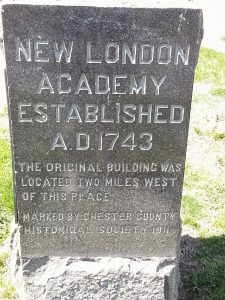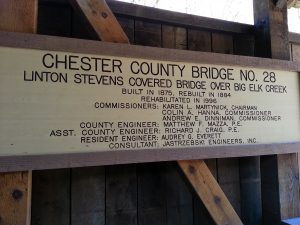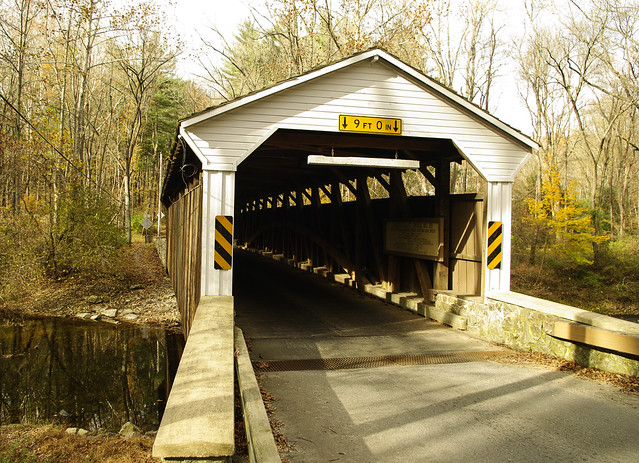New London was originally the home of the Lenni Lenape Indian tribe. It was visited by early farmers and explorers, but began to grow when the London Company, a group of five entrepreneurs, purchased a large tract of land in order the break the tract into smaller lots and sell them at a profit to immigrant farmers. This tract included present-day New London Township, which was chartered in 1723. The first immigrants were Swedish framers from New Castle Delaware. The next wave of immigration brought Scottish Irish Presbyterians.
 In 1743, Rev. Dr. Francis Alison, then the minister of the New London Presbyterian Church, established the original New London Academy (the parent school of the University of Delaware) where he instructed three signers of the Declaration of Independence: Thomas McKean, George Read, and James Smith. He also instructed four governors and many other important citizens. New London residents were prominent patriots in the Revolutionary War. Benjamin Franklin, who farmed property in nearby Franklin Township and was in charge of the Pennsylvania Militia, encouraged local families to rally to the cause and to provide horses, manpower, and supplies.
In 1743, Rev. Dr. Francis Alison, then the minister of the New London Presbyterian Church, established the original New London Academy (the parent school of the University of Delaware) where he instructed three signers of the Declaration of Independence: Thomas McKean, George Read, and James Smith. He also instructed four governors and many other important citizens. New London residents were prominent patriots in the Revolutionary War. Benjamin Franklin, who farmed property in nearby Franklin Township and was in charge of the Pennsylvania Militia, encouraged local families to rally to the cause and to provide horses, manpower, and supplies.
The area was a hub for stagecoaches going from Baltimore to Philadelphia and from Lancaster to Perryville, Maryland. George Washington kept a relay of coach horses in the village, the White Clay headwaters behind the stable providing their water. After the Revolutionary War, New London continued to be a busy crossroads village.
At one time the town had two inns, a blacksmith shop, saddlery shop, wheelwright, shoemaker, tailor, tinsmith, tannery, an apothecary and several general stores. In 1828 a board of trustees was incorporated to revive the original New London Academy at the site of the present Township building. The building burned in 1848 and was immediately rebuilt. An addition to the rear of the building was added in 1915. In 1803 a library was established. That same year the fourth Post Office in Chester County was opened at the New London Crossroads. On October 28, 1847 the name was changed from New London Crossroads to New London.
 New London Township has two State Champion trees, which are determined by a State Forester measuring the circumference at chest height (4 1/2 feet) and limb spread. One is a (Tilia petiolaris) and the other is an English Walnut (Juglans regia). The Township of New London also has two covered bridges, the Linton Stevens Covered Bridge and the Rudolph & Arthur Covered Bridge which are on the National Historic Register.
New London Township has two State Champion trees, which are determined by a State Forester measuring the circumference at chest height (4 1/2 feet) and limb spread. One is a (Tilia petiolaris) and the other is an English Walnut (Juglans regia). The Township of New London also has two covered bridges, the Linton Stevens Covered Bridge and the Rudolph & Arthur Covered Bridge which are on the National Historic Register.

